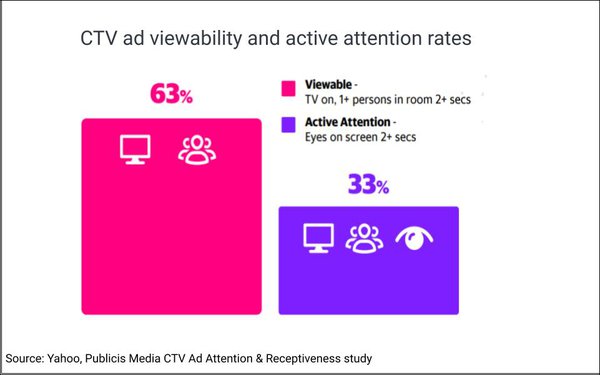
While streaming viewers are
generally accepting of ads, just a third of connected TV (CTV) ads receive two or more seconds of active, eyes-on-the-screen attention, according to a study from Yahoo and Publicis Media that used
both facial recognition and ACR data and a consumer survey to probe CTV ad …